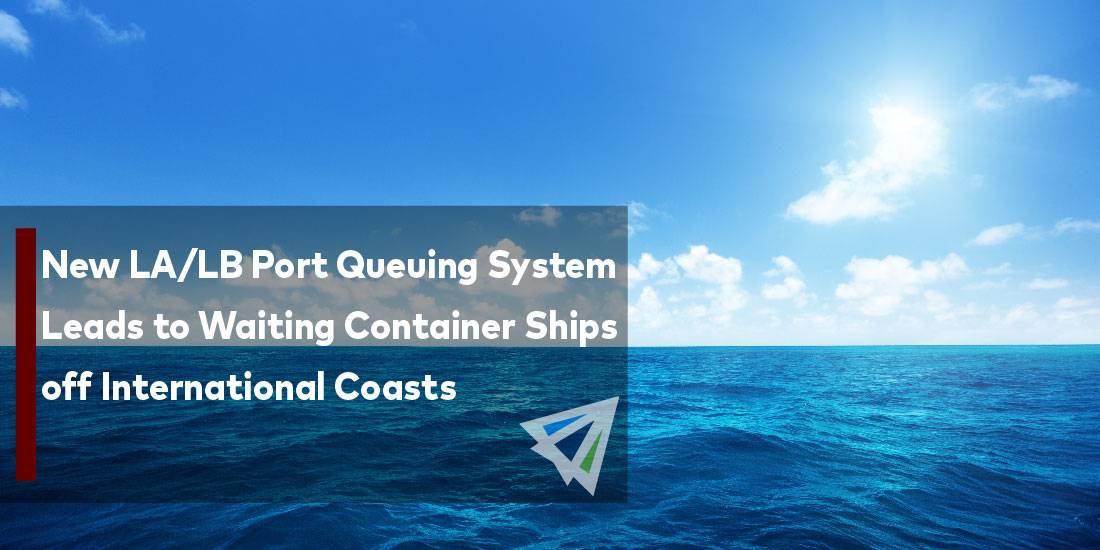New LA/LB Port Queuing System Leads to Waiting Container Ships off International Coasts
Recent news regarding container and vessel congestion at the Southern California ports have appeared to suggest congestion may be easing up. There are less container ships waiting off the coast of Long Beach and Los Angeles, and containers are moving more efficiently on the ports’ grounds. However, this recent development does not necessarily mean the situation at the ports is getting better overall.
Since the Southern California ports instituted a fee on containers dwelling at the port for too long, cargo has been moving out of the port rather efficiently. In fact, the ports haven’t had to charge anyone for long-staying containers yet, which is direct evidence that the strategy has been working.
So, what is the issue with container ships if the overall number of them waiting offshore appears to be declining? Well, the reason for less ships waiting offshore is due to a new queuing system the ports have implemented.
New Container Ship Queuing System
The increasing number of ships waiting offshore of Southern California has been concerning for several reasons. Firstly, the congestion is a safety hazard as more and more ships wait days on end in place as more ships pull up. Traffic jams off the coast with container ships carrying tens of thousands of containers isn’t necessarily a recipe for success. The congestion is also a safety hazard as far as air quality is concerned. That many steamships waiting in such a small area causes pollution that port operators and ship captains are forced to wait in.
To address these concerns, a new queuing system, implemented in mid-November, has container ships waiting outside of a specifically designated Safety and Air Quality Area (SAQA.) This area extends 50 miles north and south, and 150 miles to the west of the ports.
So, while the number of ships waiting just off the shore of California has drastically decreased, the overall number of ships in queue to arrive at the ports has not changed. They have merely been redirected on where to wait based on arrival time and maximum capacity inside the designated SAQA.
This week, there were 44 container ships inside of the SAQA, and an additional 50 outside of that area, bringing the total vessel count to 94 ships, which comes in just shy of Monday’s record of 96 container ships. However, the overall container ships in queue are still up by 27% since October.
How Does the Queuing System Work?
The new queuing system is meant to prioritize the arrival of certain vessels over others to avoid traffic jams with several ships arriving at once. The way it works is by prioritizing vessels based on their Calculated Time of Arrival (CTA). In the past, container ships were only recognized once 20 miles from the port, at which point in time the port would figure out how they can fit it into the schedule. As shipping conditions changed and demand ramped up, this method of container ship management obviously proved inadequate.
The CTA in the new queuing system is calculated based on the hypothetical arrival time of the ship based on its last port of call.
Congestion in Mexico, Taiwan, and Japan
While the new system is restoring a bit of balance to the port grounds, mitigating safety hazards, and improving air quality around the Californian coast, congestion is all but fixed. As container ships have been directed to wait outside the SAQA, it’s creating large amounts of congestion near ports of departure as ships must wait for their turn.
Vessel position reports indicated several ships were waiting just off the shore of Mexico’s Baja peninsula. There were an additional ten container ships with estimated CTA’s on or before Tuesday that are still waiting outside on Asian waters: four off the coast of Japan; five off the coast of Taiwan; and one off the coast of Ningbo.
Please reach to our team at InterlogUSA for more information or questions you have regarding your shipping situation.
